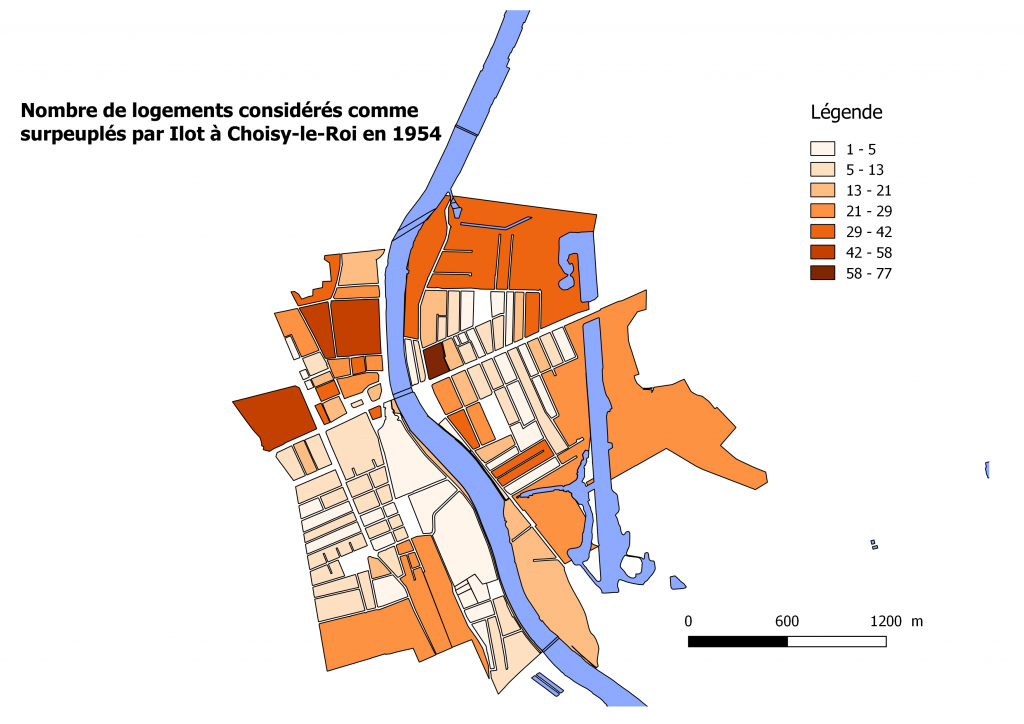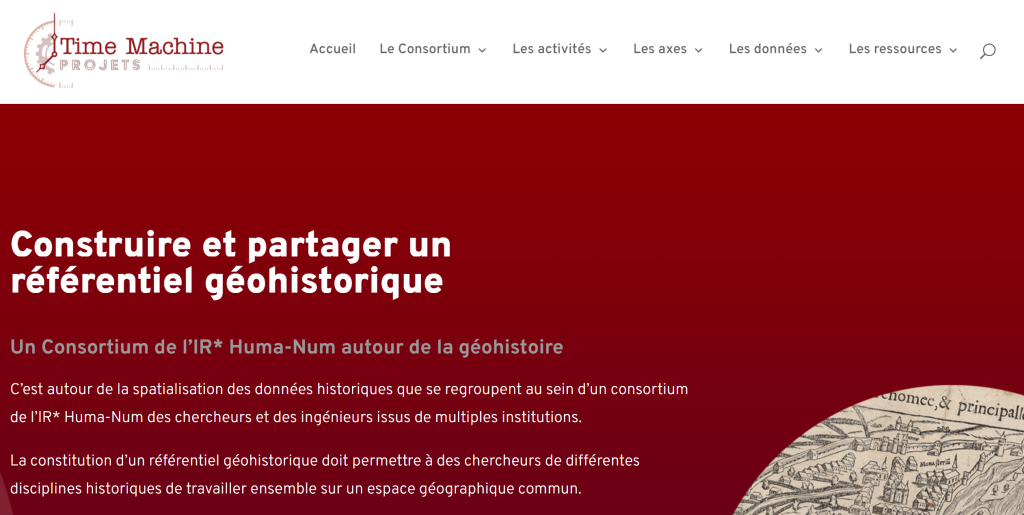Objectives of the Seine 1954 project
On the occasion of the French population census of May 1954, INSEE and the Institut d’Aménagement et d’Urbanisme de la Région Parisienne jointly collected statistical data on the population and housing of the communes of the Seine, resulting in the publication of a booklet for 72 of the 81 communes of the Seine department.
Each booklet includes, in addition to a methodological note, 4 statistical tables and a location map of the blocks of the municipality. The tables detail, at the block level, the results of the census. Table I describes the “total population by type of household by sex and age”, detailing the male and female population in 7 age categories (0-2 years, 3-5 years, 6-13 years, 14-19 years, 20-24 years, 25-64 years and over 65 years). A distinction is also made between types of household: ordinary households, collective households (education, hospitals, hotels, religious communities, etc.), population counted separately (military, interns, detainees, etc.), as well as the category “Muslims of Algeria”. A “Foreigners” section is specific to the city of Paris.
Table II lists “the active and non-active population by type of household according to socio-professional category”, isolating in particular the active population of the public sector. Table III deals with “occupied dwellings according to the number of habitable rooms, the degree of occupation and the equipment”; it distinguishes in particular overcrowded dwellings and details the equipment in water, gas, electricity, telephone, WC, shower or bath. Table IV is devoted to buildings (number, date of construction, number of floors).
The serialization of these data and their spatial analysis, thanks to the transcription of the plans annexed to the fascicles and their vectorization, offer numerous opportunities for research on the Parisian metropolis at a crucial moment in its history, relating to social and urban history, the history of housing, private life, etc. The precision of the data allows a precise analysis of local situations, on the scale of some 15,950 blocks (including 5,100 Parisian blocks).
Composition of the project team
The project benefits from the work already carried out by Jean-Luc Pinol on Paris within the framework of his Atlas; he participates in the team’s reflection and work.
Within the Analyse Comparée des Pouvoirs laboratory of the Université Gustave Eiffel, the project mainly concerns two teacher-researchers (Frédéric Moret, PR, and Frédéric Saly-Giocanti, MCF). It is part of the larger Archival City project (https://archivalcity.hypotheses.org/), which was selected during a call for projects by the I-Site FUTURE (http://www.future-isite.fr) and has been granted €900,000. In this context, Paul Lecat, a doctoral student in contemporary history, was recruited as a research engineer; in addition to the scientific secretariat of Archival City, he is involved in the Seine 1954 project, for about a third of his time. The team has been reinforced on several occasions by master’s degree trainees.
Thanks to the resources of Archival City, the Seine 1954 project did not need to apply for funding from the consortium.
Results obtained
Thanks to the support of the Bibliothèque de l’Hôtel de Ville and its then director Valérie Alonzo, we were able to obtain the four volumes containing the fascicles concerning the Seine-banlieue.
The constitution of a homogeneous database of information from the 1954 census and its visualisation via a GIS on the scale of the Seine department is now complete and access to researchers via Huma-Num is imminent. This is only the first stage of the project, which will be developed in the coming years.
As the following map shows, the survey carried out earlier in Paris provided a typology of housing comfort in 1954.


In the same way, it is possible to carry out cartographies on several other themes as shown by the maps presenting the number of dwellings considered as overcrowded or the percentage of dwellings equipped with a toilet in Choisy-le-Roi.



